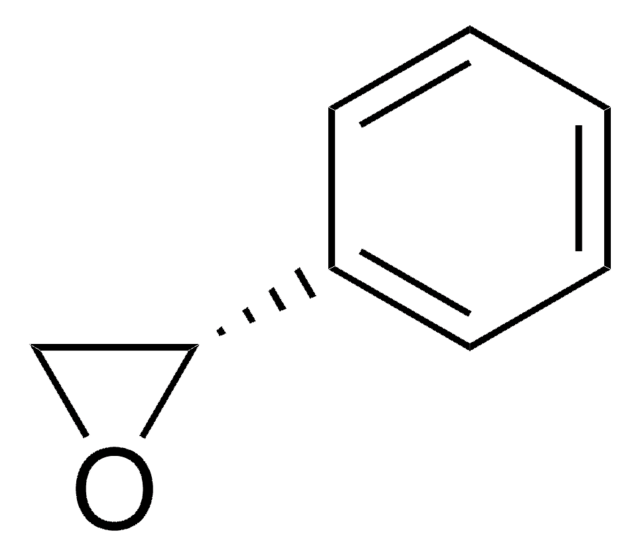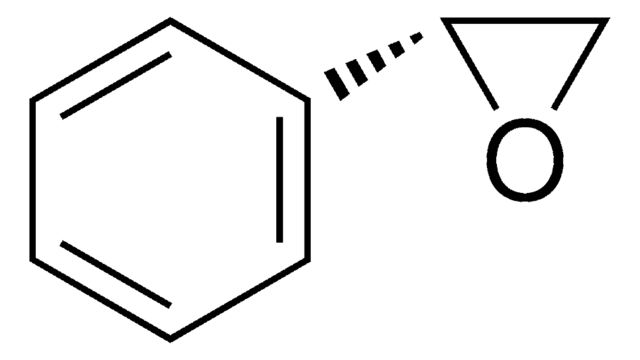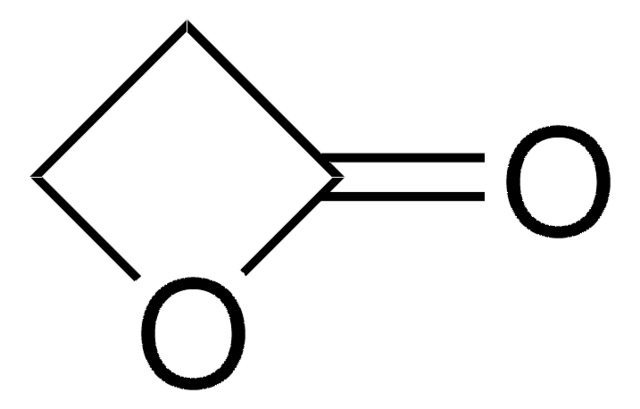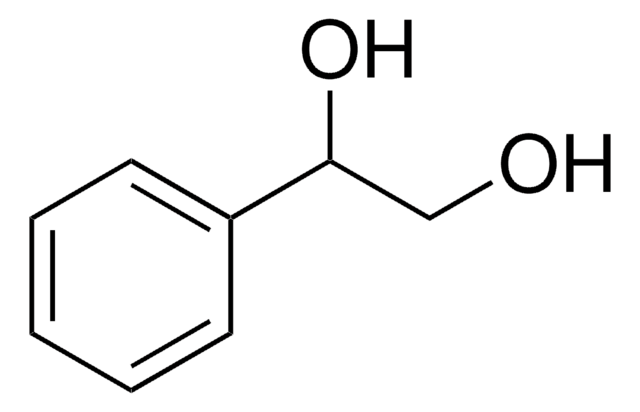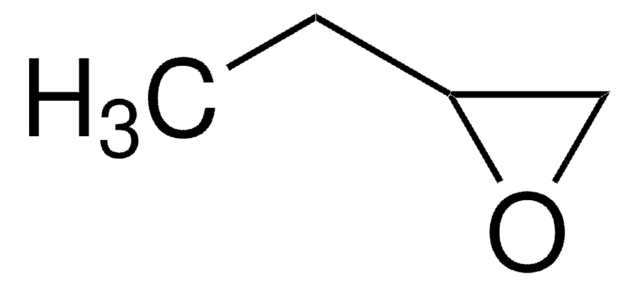추천 제품
vapor density
4.14 (vs air)
Quality Level
vapor pressure
<1 mmHg ( 20 °C)
분석
97%
autoignition temp.
928 °F
expl. lim.
~22 %
refractive index
n20/D 1.535 (lit.)
bp
194 °C (lit.)
mp
−37 °C (lit.)
density
1.054 g/mL at 25 °C (lit.)
SMILES string
C1OC1c2ccccc2
InChI
1S/C8H8O/c1-2-4-7(5-3-1)8-6-9-8/h1-5,8H,6H2
InChI key
AWMVMTVKBNGEAK-UHFFFAOYSA-N
유사한 제품을 찾으십니까? 방문 제품 비교 안내
애플리케이션
- Synthesis of poly (styrene oxide) with different molecular weights using tin catalysts: This study explores the ring-opening polymerization of styrene oxide using tin catalysts to produce homopolymers with varying molecular weights (Kayan, 2015).
- Electrogenerated BF3 from tetrafluoroborate-based ionic liquids: theoretical and experimental studies towards selective styrene oxide isomerization: Research on using electrogenerated BF3 to selectively isomerize styrene oxide, highlighting theoretical and experimental insights (Bortolami et al., 2021).
- Selective conversion of styrene oxide to 2-phenylethanol in cascade reactions over non-noble metal catalysts: This paper investigates the catalytic conversion of styrene oxide to 2-phenylethanol using non-noble metal catalysts (Sasu et al., 2016).
- Laboratory blueprints for interstellar searches of aromatic chiral molecules: rotational signatures of styrene oxide: Study of the rotational spectra of styrene oxide for potential detection in interstellar space (Stahl et al., 2020).
신호어
Danger
Hazard Classifications
Acute Tox. 3 Inhalation - Acute Tox. 4 Dermal - Carc. 1B - Eye Irrit. 2 - Muta. 1B - Skin Irrit. 2 - Skin Sens. 1
Storage Class Code
6.1C - Combustible, acute toxic Cat.3 / toxic compounds or compounds which causing chronic effects
WGK
WGK 3
Flash Point (°F)
176.0 °F - closed cup
Flash Point (°C)
80 °C - closed cup
개인 보호 장비
Eyeshields, Faceshields, Gloves, type ABEK (EN14387) respirator filter
시험 성적서(COA)
제품의 로트/배치 번호를 입력하여 시험 성적서(COA)을 검색하십시오. 로트 및 배치 번호는 제품 라벨에 있는 ‘로트’ 또는 ‘배치’라는 용어 뒤에서 찾을 수 있습니다.
이미 열람한 고객
Jan Volmer et al.
Applied and environmental microbiology, 80(20), 6539-6548 (2014-08-17)
The application of whole cells as biocatalysts is often limited by the toxicity of organic solvents, which constitute interesting substrates/products or can be used as a second phase for in situ product removal and as tools to control multistep biocatalysis.
E E McConnell et al.
Critical reviews in toxicology, 24 Suppl, S49-S55 (1994-01-01)
Eleven long-term toxicity studies were reviewed on styrene and five on styrene oxide in an effort to evaluate the potential carcinogenic activity of these chemicals in animals. The styrene studies included inhalation exposure (rats, mice, guinea pigs, and rabbits), intragastric
The genetic toxicology of styrene and styrene oxide.
R Barale
Mutation research, 257(2), 107-126 (1991-03-01)
D H Phillips et al.
Critical reviews in toxicology, 24 Suppl, S35-S46 (1994-01-01)
Styrene is metabolized to styrene oxide, a direct-acting mutagen and carcinogen. Styrene oxide reacts with DNA mainly at the N-7 position in guanine, but also at other sites and with other bases. Substitution occurs at both the alpha- and beta-positions
Characterization of the epoxide hydrolase NcsF2 from the neocarzinostatin biosynthetic gene cluster.
Shuangjun Lin et al.
Organic letters, 12(17), 3816-3819 (2010-08-14)
Neocarzinostatin (1) biosynthesis is proposed to involve a vicinal diol intermediate. It is reported that NcsF2, one of two epoxide hydrolases encoded by the NCS gene cluster, catalyzes regiospecific addition of H(2)O to C-2 of both (R)- and (S)-styrene oxides
자사의 과학자팀은 생명 과학, 재료 과학, 화학 합성, 크로마토그래피, 분석 및 기타 많은 영역을 포함한 모든 과학 분야에 경험이 있습니다..
고객지원팀으로 연락바랍니다.